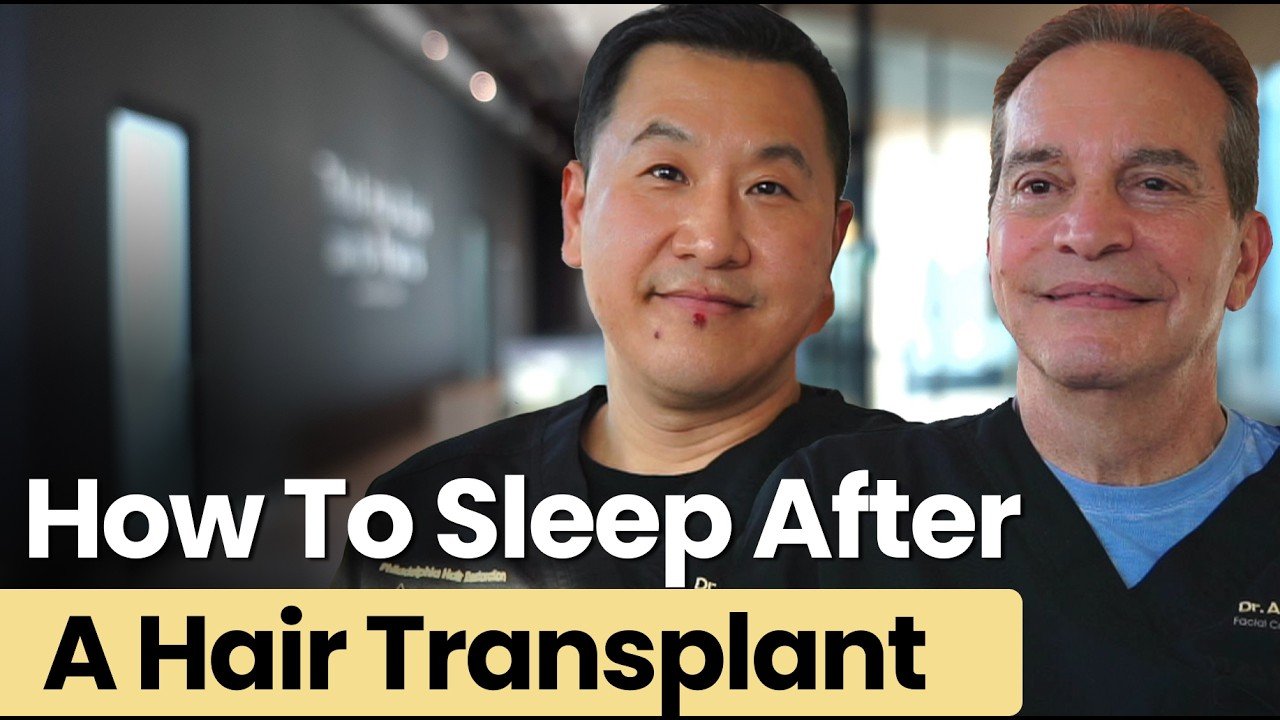Two hair transplant techniques dominate hair transplants: the FUE and the FUT. Learn how these are done, the differences, advantages, drawbacks and recovery times of each.
If you have a balding head or extremely thin hair, you might think that your options are limited to wearing caps permanently or shaving it all off. Not so!
Due to advancements in technology and skilled surgeons, hair transplants offer a permanent hair loss solution.
While these have become more common in the last couple of decades, the idea of hair transplants has been around for much longer. One of the first known attempts was in 1897, when a doctor took hair and scalp tissue and placed them on scars left by Favus, with good results. In 1952, Dr. Orentreich performed his transplant with better results but still with an unnatural, hair-pluggish look.
Luckily, this field of medicine has exponentially grown since then and has yielded the techniques we have today that provide higher rates of success and natural-looking results. These techniques are the traditional FUT hair transplant and the more modern FUE hair transplant.
FUE VS FUT
Over the decades, dermatologists, doctors, and surgeons have consistently worked on improving the hair transplantation methods of the past with excellent outcomes.
Today, the process is much more refined making hair transplants less painful; recovery is faster and with better, more long-lasting results.
When you begin looking into hair transplants or walk into a hair transplant clinic, two techniques will be discussed with you: FUE and FUT.
These are hair transplant techniques that share some similarities and differ in others.
Let’s take an in-depth look at each technique, what to expect, and the benefits and drawbacks of either.
FUE
A Follicular Unit Extraction (FUE) is done by taking individual hair follicles from the skin in the donor area and implanting them where your hair is thinning.
This increases the density of the hair in the implanted area, giving it a thicker look.
Below is the typical process followed.
- On the day of the surgery, the hair at the back of the head is shaved down to about 1-2 mm in length. This is done to make it easier to access follicles.
- The patient then gets local anesthesia, which is administered slowly over the entire donor area.
- The surgeon then extracts follicles using special 0.8mm and 1 mm micro punches. This is done under magnification for better visibility.
- The surgeon then makes an array of tiny incisions with a needle or other tool on the areas of baldness or thinning.
- They then insert the harvested follicles into these incisions
- Once the process is done, he will clean you up and bandage the transplanted area to allow for recovery.
Risks or Side Effects
There shouldn’t be any scars from a FUE besides small white spots where follicles were harvested. These should disappear with time.
While recovery from a FUE should be pretty straightforward, see a doctor should the following occur:
- Any signs of infection
- Crust of drainage on the transplant site
- Numbness or tingling near the surgical site
- Swelling or pain around the transplanted site
- Bleeding from the surgery site
- Transplanted hair that looks different than the hair around it
- Follicle swelling
- Continuing balding and thinning post-transplant
Benefits of a FUE
- It’s not labor intensive, so much so that one surgeon and two assistants can run a clinic.
- The procedure is less traumatic than a FUT. This means less minimal postoperative recovery time.
- Requires minimal graft preparation
- You do not need too many different equipment to execute
- Microscopic scars at the donor area are almost invisible, allowing patients to wear short hair if they so wish
- No stitches are required, negating the need for patients to return for suture removal.
- Body hair can be used to increase density with this procedure
- A FUE can be used to cover pre existing scars from strip surgery
- Unlike a FUT, it does not leave a linear donor scar
- A FUE is a good option for people with scalp laxity who would not be good candidates for a FUT
Drawbacks of FUE Transplants
- FUEs are pricier than FUTs, but the results are well worth it
- A FUE is time-consuming and tedious. This can take its toll on the surgeon’s energy, patience, enthusiasm, and concentration. It also takes some time to master. These aspects are reflected in the cost of the procedure.
- The procedure is lengthy and can be tedious for patients who have to lie in the prone position for the entire duration of the procedure.
- The number of grafts extracted per day is limited, requiring multiple sessions over a number of days. Some clinics have introduced a mega-session harvesting technique. Here, 2000 grafts can be harvested in 10-12 hours.
- Hair follicles are extracted from a larger donor hair area than traditional micrografting.
- Has a slightly lower growth rate compared to a FUT. This is because FUEs have a higher follicular unit damage.
Let’s see more about FUTs.
FUT
A follicular Unit Transplantation (FUT) is where a surgeon cuts a strip of hair-bearing skin from the back of your head. The size of the strip varies from one patient to the other, depending on the number of follicles required to cover the balding areas. Typically, a strip will not be larger than 1 to 1.5 centimeters wide.
Once the surgeon has enough strips, they extract healthy hair follicles for implantation. These hair follicles are then inserted in the thinning or balding areas to increase hair density.
Most patients will stay awake during the surgery, which takes about 4 to 8 hours. This procedure is faster than an FUE, and the patient’s scalp is numbed with local anesthesia.
A FUT is conducted as below:
- The surgeon will re-draw your hairline and mark the area of extraction
- They can take photos for your medical record to have something to compare the outcome to
- You will be offered the chance to take a sedative before the surgery. This is optional, as you will have your scalp numbed as well. The sedative is provided to help relax you before the procedure starts.
- The hair at the donor site (where hair from transplanting will be harvested) is shaved off to about two millimeters.
- The surgeon cuts out the hair strips with the follicles to be harvested for the transplant.
- The surgeon will close the harvested area with sutures
- The surgeon then makes tiny incisions in the balding area. These will determine the density, angle, and direction of the transplanted hair.
- The harvested hair follicles are then inserted into these incisions using minuscule forceps. This is done carefully to ensure the pattern comes off as naturally as possible.
- You will be bandaged, and your surgeon might also apply a topical antibiotic on your scalp.
An FUT is also known as a Follicular Unit Strip Surgery (FUSS).
Good candidates for an FUT are:
- Aged 25 and above. Hair loss patterns are erratic before this age
- Men with the Norwood hair loss pattern
- People with a higher hair follicle density
- Candidates looking to address balding at the front of the head
Advantages of FUT
- Offers good results if you need a large number of grafts to cover the balding area
- The procedure is shorter compared to an FUE
- It’s cheaper compared to an FUE
- Has a lower follicular unit damage. This lower transaction means a higher growth rate.
- Well-performed FUT transplants will give good results by resisting the unnatural hair-plug look.
- You can cover large bald sections adequately in a few sessions
- After a FUT, it’s possible to have a FUE later on to achieve desired results
- You have better chances of getting high-quality grafts in a FUT than in a FUE. This is because in a FUT, skin with hair is stripped, and hair is extracted under a stereo-microscope. This gives better accessibility and visualization of hair grafts, and follicular units can be isolated with intact protective tissue.
- You remain with one linear scar irrespective of the number of FUT transplants you undertake over your lifetime.
Drawbacks of an FUT
- An FUT involves scalp excision, leaving more scarring compared to an FUE
- The recovery time is longer than that of an FUE. This is because of the stripped donor site.
- A FUT is associated with more pain because of the donor area
- A graft survival is slightly lower in FUTs than it is in FUEs
- Some people experience redness, swelling, and itchiness after the procedure
- Sutures have to be removed after 10 to14 days
- You are limited to head hair
Differences between FUE and FUT Hair Transplants
When performed well, both procedures will give denser-looking hair. However, despite the common goal, there are some differences in the procedures and their outcomes.
Here are the main ones.
Pain after procedure: FUEs are essentially painless procedures, but expect some discomfort with a strip hair transplant. This is mainly on and around the donor area where skin was excised and sutured.
Time: a surgeon will have less time with a strip procedure than FUE. This is because surgeons need to sit with the patient to extract follicles and then transplant them. On the other hand, there is space during harvesting strips when the surgeon is not with the patient.
Sutures: there are no open wounds with FUEs; hence, there is no need for stitches. However, the excised donor area in a FUT requires stitches.
Bleeding: There might be bleeding during a FUT. This is on the donor area when cutting off the strip. There is no bleeding in a FUE during or after the procedure.
Healing time: healing time is faster after an FUE than an FUT. The donor area should heal in 7 days, while the transplanted area should be okay 10 to 14 days after an FUE. On the other hand, the donor area should heal in 2-3 weeks after an FUT, while the recipient area should heal in 14 days.
You can continue your workout regimen in 1-2 weeks after a FUE and 2-3 weeks after a FUT.
Transactional rate: transactional rates speak to the number of grafts damaged during extraction. FUTs have a lower transactional rate of 1% – 2%, while FUEs have a higher rate of 5% – 10%.
Scarring: a FUE will leave microscopic lesions that can be invisible with short hair. However, the donor site from a FUT can be visible through short hair for a while.
Cost: A FUE is pricier than a FUT because it’s a lengthy, more tedious process.
Scope: you can cover a larger bald area with a FUT but not a FUE. One reason for this is that you can get more grafts using the strip method. Similarly, some studies suggest that a FUT gives you more high-quality grafts with a higher survival rate than FUEs.
Hair Transplant FAQS
Can I have multiple transplants?
You can have several transplants if the initial one does not attain the desired results. Your surgeon would advise how long to wait before a subsequent procedure.
Can I have both procedures?
Indeed, an individual can have a FUE and a FUT. For example, one can have a FUT, and their scalp becomes too tight for additional FUTs. In this case, their subsequent surgery can be a FUE.
Is their pain during the surgery?
No. You get local anesthesia in both surgeries and can be sedated for a FUT. This makes the procedure painless. However, you can experience some pain during recovery, more so with the FUT, as you will be healing a wound in the donor area.
FUE vs. FUT: Which Method Is Best?
Ultimately, the best hair replacement method is the one that meets your needs best, and these needs vary from person to person.
We understand this very well at the Philadelphia Hair Restorations Clinic and go to great lengths to discuss both procedures and expectations with you. This information, coupled with your budget, how you wish to wear your hair, and the recovery timelines, allows each individual to identify the best procedure.
So, I need to hide under a cap. Call us for a free consultation today, and let us review your options and help you identify the best hair transplant method for the hair of your dreams!



